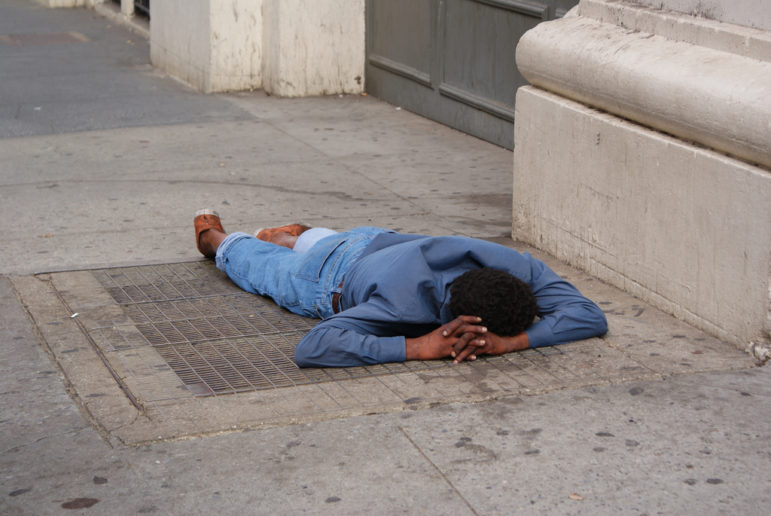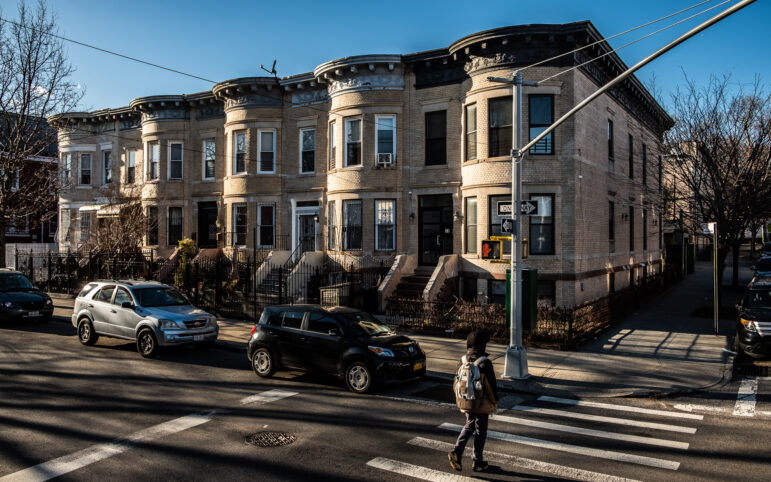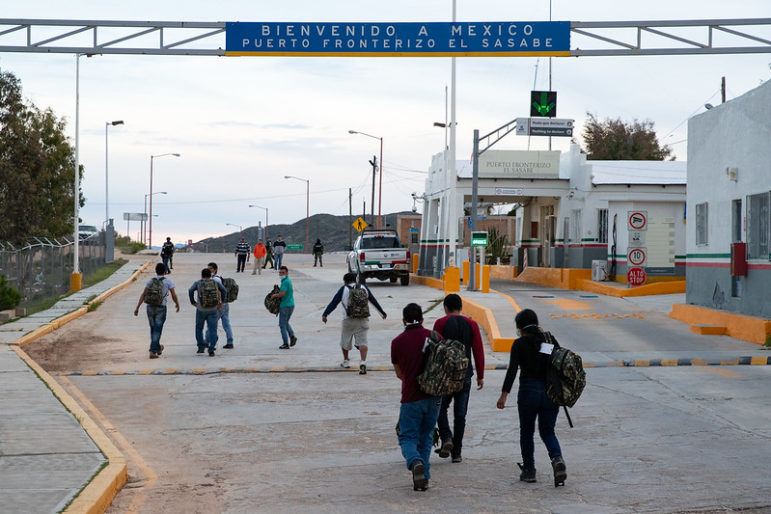
Lawrence's Lenses
A person.
Last Monday, a record 4,200 volunteers fanned out across the five boroughs to count how many homeless New Yorkers live outside of the city’s shelter system. The effort was part of the national Homeless Outreach Population Estimate (HOPE) and has been conducted annually through the Department of Homeless Services since 2005. I don’t know if the numbers are available yet, but last year, 3,900 individuals were counted.
Many of these victims are probably known to DHS, but getting an accurate count of the unsheltered homeless helps identity people that might not know what services are available to them. In addition to the survey, we arrange for anyone who is interested to get picked up and driven to a shelter and we distribute information about comfort centers around the city. On a practical level, the count also sets the amount of additional federal funding the city gets for homeless services—and the city needs all the help it can get.
This is my second year volunteering and, as someone who writes about housing issues a lot, I have been following the shocking rise in homelessness in New York since the Great Recession with increasing alarm. There are 61,000 people in the city’s homeless shelters, the vast majority of them women and children. That is a staggering amount of suffering.
HOPE has put this broader crisis into very concrete and intimate terms for me, as I’m sure it has for all of the volunteers. It has made me stop thinking about homelessness as one big crisis and forced me instead to see what it really is: 70,000 individual crises. It’s all too easy for us not see it that way.
We dehumanize, demonize, and demoralize the homeless in New York City. We dehumanize by referring to them as “the homeless,” a thought-terminating phrase that hides more relevant descriptors like “PTSD-suffering veteran,” “abuse victim,” “addict,” or “mentally/physically-disabled.” And of course, all of these should be further qualified by adding “poor.”
We demonize every time we object to homeless shelters in our neighborhoods. Some argue about a flawed “process” of community engagement, some about the unfair distribution of shelters in poorer neighborhoods. Whatever validity these arguments have doesn’t erase the fact that most of us don’t want homeless people, especially men, around because we are afraid of them and disgusted by them — ignoring the fact that they are the ones who are more likely to be victims of crime and abuse. Our property values will be fine.
We demoralize them because there is no end to this and they know it better than anyone. Imagine the catastrophic events that led someone to being homeless and how that would weigh on that person. Imagine enduring the cycle of shame, confusion, and despair that comes with navigating the limited resources of our shelters and social services. Then imagine that there is no end in sight.
Many of the sheltered homeless are women with children fleeing an abusive home. Many cycle through to supportive homes and on to permanent ones. No doubt there is hope. Tangible, obtainable hope. We should be hearing more about these stories because they are important to champion.
But for too many, especially the people that I have met canvassing for HOPE, where is the actual hope? Are they going to get the medical and mental care they need? Are they going to get the support from the community they deserve? Are they ever going to get a safe, reliable home?
I would be lying if I told any of these men — and I know for sure that I recognized some of them from last year — that I thought so. Maybe they will, but I don’t know. They know better than I do. Many of them were appreciative of our efforts, but in a knowing way that at times made it feel like they were trying to comfort us.
So I’d like to say that participating in HOPE makes me feel good and to an extent it does. I am helping and it does matter. I don’t know how the people of DHS, the NYPD, and other outreach groups manage this on a day-to-day basis. Maybe, at least for one night, I’m helping them carry the weight just a little. I hope that helps too.
But mostly, when I get home at 4 a.m., I feel exhausted, angry, and full of shame. I am not doing enough. We are not doing enough.
I said earlier that I now feel like there are 61,000 crises instead of one big one. But there is one big crisis. Our economic system is obviously failing most of us. Until we fix capitalism — or whatever bizarro form of it we are fooled into accepting — too many New Yorkers will suffer. We are all partaking in a system that demands the dehumanization, demonization, and demoralization of all the poor and vulnerable. Right now, we accept that.
It’s easy to blame the homeless and keep on walking down Broadway. It’s easy to blame the feds for not sending enough funding or the mayor for botching the shelter system and volunteer one night of the year. But these are our sins. I hope that more of us see that because if we do, I know we can change it.









3 thoughts on “CityViews: Counting the Homeless, and the Ways We All Fail Them”
The best article I have ever read about the homeless. It should be required reading for everyone of us.
I agree with Mr. Harrison. It is only too easy to treat the homeless as an invisible issue, or worse as a bother. I bought sandwiches for a couple in Manhattan, and I’ll never forget the shocked look of a female passersby. She could not stop giving incredulous glances at me and the homeless couple.
I object to Mr. Harrison ‘s descriptors. A leading cause of homelessness is that the income of these displaced people did not keep pace with an incredible increase in rent.
Gentrification/rezoning is reshaping the City. Almost no politicians are on the side of the working class and poor. I assume that REBNY is a better source of campaign contributions.
Pingback: CityViews: Why Quibble Over Who’s ‘Homeless’? We Can Afford Housing as a Right for All. – USA Current News